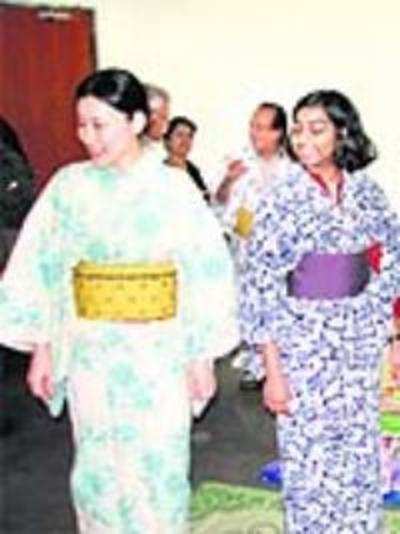The art of kimono dressing

The
the right (except when dressing the dead for burial).
An interesting aspect about the Kimono is that it can be worn by both the genders and is normally worn with traditional footwear called the “Zori” or “Geta”’ and split-toe socks called the “Tabi”. The Japanese kimono
These days Kimonos are rarely worn as everyday clothing. In fact today, a Japanese woman usually owns only one Kimono, called the ‘Furisode’ kimono, with almost floor-length sleeves, which is worn for the coming of age ceremony on her 20th birthday. For weddings, the complete bridal Kimono and other related apparel is usually rented.
Kimono Styles
There are many types of kimono, each worn according to the person’s age, season or the event. However, the formal kimono can be basically broken down into two main categories based on the person’s age and marital status. Young unmarried women wear kimono with long sleeves called
Older women or those who have married, wear a kimono with short sleeves called
Today, kimono producers and designers have modernised the kimono to meet consumers everyday demands, economics and lifestyle. New kimono patterns, designs, colors and fabrics are made to be “generic” to the person’s age or marital status, thus being much more versatile.
Kimono Undergarments
An undergarment like a slip is worn under the kimono with the collar showing beneath the kimono. The two pieces full slip is called
How to Wear a Kimono
Traditionally, the art of wearing a kimono is passed from mother to daughter. Today, there are also kimono schools that teach the proper techniques of how to wear a kimono. Below is a step by step basics of how to wear a kimono properly.
· Always, put on white
· Put on the undergarment slips called juban consisting of a white cotton top and skirt. Today, an alternative is to wear
only the white collar that goes around the neck called the eri-sugata.
· Put on the kimono, making sure the back seam is centered.
· For both men and women, wrap the right side of the kimono over the body, then overlap it with the left side. Right on
top of the left is only used to dress a corpse for burial.
· Adjust the white slip collar to show evenly around the neck just under the kimono collar as shown in the above pictures.
· Don’t worry if the kimono is too long for it is supposed to be.
· Tying the obi — the different types of belts worn over the kimono — is the next step to wearing a kimono.
The
Inputs by Ms Kato, Japanese lecturer, Bangalore University.



















